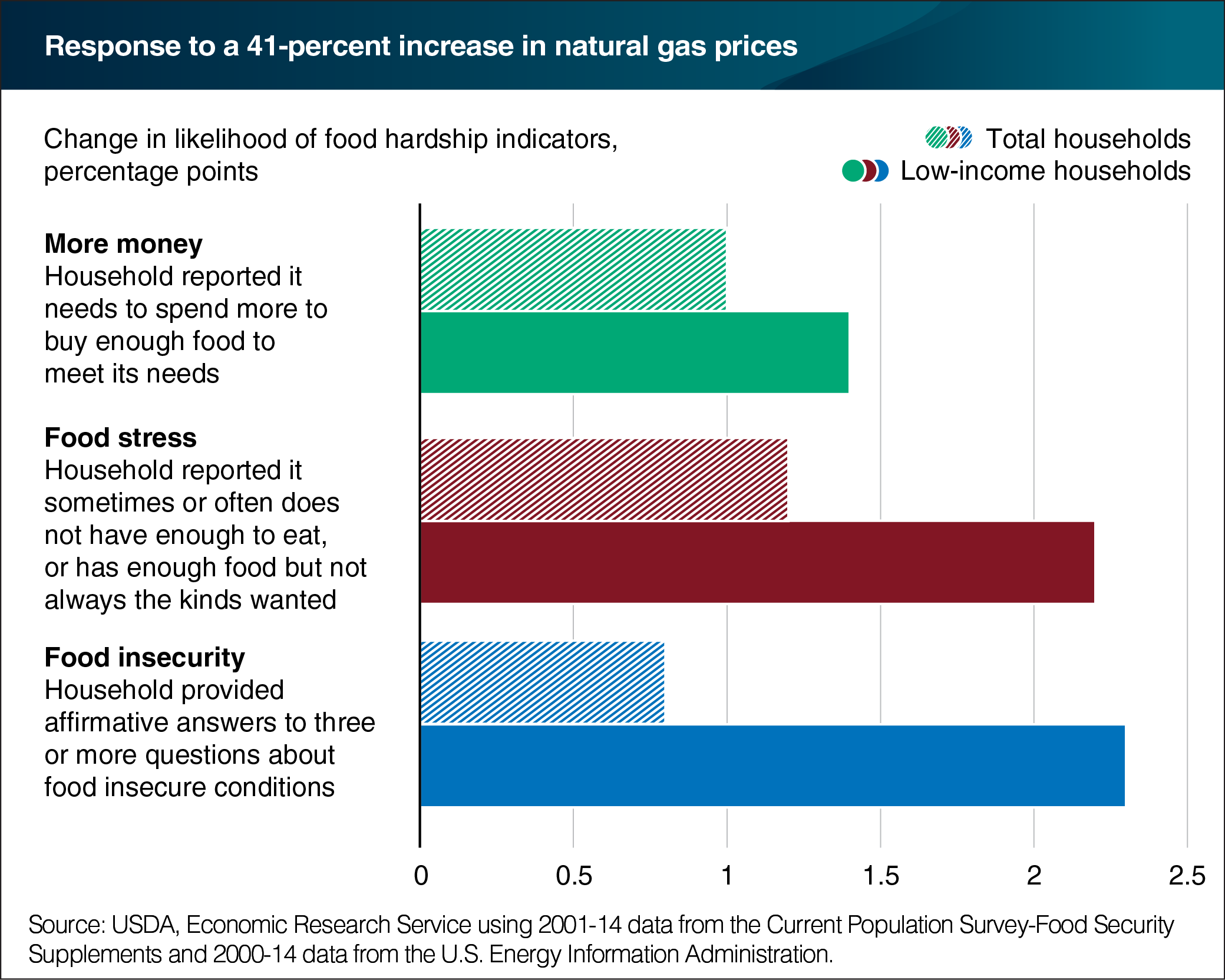Natural gas price shocks increase the probability of food hardship
- by Charlotte Tuttle
- 7/14/2017

Poor households often lack the savings, assets, and income to protect themselves from unexpected increases in energy prices (called energy price shocks). A recent ERS study explored the relationship between energy price shocks and food hardship, including food insecurity—not having resources to acquire enough food for some or all household members. The study found that price shocks in gasoline, natural gas, and electricity increased the probability of households becoming food insecure and/or experiencing two other food hardship measures, with a larger response for low-income households compared to the average response for all households. Natural gas price shocks had the most consistent effects. Over 2000-14, annual price increases for natural gas ranged from 7 to 25 percent, and some years posted price declines. The study found that increases in natural gas prices above these typical increases, i.e. unexpected, large price rises estimated to average 41 percent above prior years’ prices, raised the probability of needing more money for food by 1.0 percentage point for all households in the data set and by 1.4 percentage points for low-income households. The unexpected, large price increases also increased the probability of food stress by 1.2 percentage points for all households and 2.2 percentage points for low-income households. Natural gas price shocks increased the probability of food insecurity by 2.3 percentage points for low-income households, more than double the response for all households. This chart appears in "Unexpected Hikes in Energy Prices Increase the Likelihood of Food Insecurity" from ERS’s Amber Waves magazine, July 2017.

